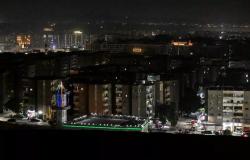The last satellite ofEarth observationEarth observation EartCARE, launched by a SpaceX Falcon 9, returned the first image from one of its four instruments. This satellite of theEuropean Space AgencyEuropean Space Agencywith the participation of Jaxa (Japan) for one of its instruments, aims to study the cloudscloudsTHE aerosolsaerosolsthe solar radiationsolar radiation and thermal to better understand their impact on the climate changeclimate change and anticipate future climate trends.
A first image of great scientific interest
This first image was acquired by Jaxa’s Cloud Profiling Radar instrument, used to provide a cross-sectional view of the clouds. It provides insight into the instrument’s potential once it is fully calibrated and reveals the vertical concentration of cloud particles and the particle fall velocity, providing detailed information to help scientists better understand cloud physics.
Parasol, the discreet satellite that studied clouds so well
Takuji Kubota, scientific manager of the cloud profiling radar, underlines the importance of this first image acquired on June 13, specifying “ reveals details about the internal structure and dynamics of clouds over the ocean east of Japan”. This is a significant step forward because “ this type of information had never been measured from space before, paving the way for many scientific discoveries ».
This first image reveals, on the one hand, the vertical concentration of cloud particles, with the densest part located in the center of the cloud, and on the other hand, the speed of fall of the particles, differentiating between ice crystals and flakes. snow and rain. These detailed data allow us to better understand the composition of clouds and their physics, a first from space thanks to EarthCARE. This image shows a clear boundary at an altitude of about five kilometers, where ice and snow melt, forming water droplets that fall as rain.
“Thanks to EarthCARE, this is the first time this measurement has been provided from space”
This detailed information on the density, size distribution and velocity of particles allows scientists to distinguish the constituents of clouds and therefore better understand their physics. Thanks to EarthCARE, this is the first time this measurement has been provided from space.
Previously, this data could only be obtained using ground-based or aircraft-borne cloud radars. However, these instruments are limited to small areas, whereas EarthCARE provides a uniform measurement of cloud structure on a global scale.
Predicting future climate trends
For Simonetta Cheli, director of Earth observation programs at ESA, this is a “ fantastic first result achieved by our partners at Jaxa, and a real indication of what we can expect in the future, when the satellite and all its instruments are fully calibrated and commissioned “. ESA and Jaxa are now awaiting the first data from the other three EarthCARE instruments, i.e. the radiometer in a large bandin a large band which will measure reflected solar light and emitted heat (radiative balance), a multispectral imager and a LidarLidar to document the presence of aerosols and measure cloud height. These first data are expected in the weeks and months to come, promising significant advances in research on climateclimate.
Working in concert, EarthCARE’s four instruments aim to provide a comprehensive understanding of the complex interactions between clouds, aerosols, solar and thermal radiation to anticipate future climate developments.






